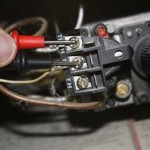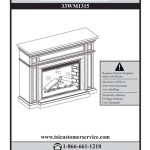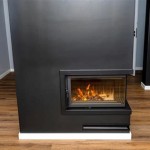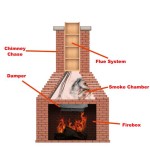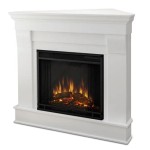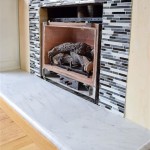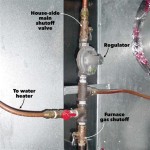```html
Remodeling a Corner Brick Fireplace: A Comprehensive Guide
A corner brick fireplace represents a significant architectural and aesthetic element within a dwelling. Its presence frequently dictates the overall style and ambiance of the room it occupies. Remodeling such a feature presents both opportunities and challenges. The inherent weight and permanence of brick necessitates careful planning and execution. This article will provide a comprehensive guide to remodeling a corner brick fireplace, encompassing design considerations, preparation steps, and potential renovation techniques.
Before undertaking any remodeling project, a thorough assessment of the existing structure is paramount. This evaluation should encompass an inspection of the brickwork for cracks, spalling, or loose mortar. Such defects can compromise the structural integrity and aesthetic appeal of the fireplace. Furthermore, the condition of the firebox, damper, and chimney should be evaluated by a qualified professional. Any necessary repairs should be addressed before proceeding with cosmetic or design-related alterations. Ignoring structural issues can lead to more extensive and costly problems in the future.
The design phase is critical to a successful remodeling project. This involves envisioning the desired aesthetic and functionality of the remodeled fireplace. Consider the existing architectural style of the room and how the fireplace will integrate with other design elements. The selection of materials, colors, and textures should complement the overall design scheme. It's advisable to create sketches, mood boards, or even digital renderings to visualize the proposed changes. Consulting with an interior designer or architect can provide valuable insights and ensure a cohesive and aesthetically pleasing result.
Key Point 1: Surface Treatment Options for Brick Fireplaces
The most direct method of remodeling a brick fireplace involves altering the surface treatment of the brick itself. Several options exist, each offering a distinct aesthetic and level of complexity. These include painting, whitewashing, German schmear, and applying a thin brick veneer over the existing brick.
Painting: Painting brick is a relatively cost-effective and straightforward option. Proper preparation is crucial for ensuring adhesion and longevity. This includes cleaning the brick thoroughly to remove soot, dirt, and grease. A primer specifically designed for masonry should be applied to seal the surface and promote paint adhesion. Select a high-quality paint formulated for interior use, typically a latex or acrylic paint. Consider the sheen level, with flatter sheens often providing a more contemporary look while glossier sheens are easier to clean. Color choice is a critical design decision, influencing the overall ambiance of the room. Light colors can brighten the space, while darker colors create a more dramatic and intimate atmosphere.
Whitewashing: Whitewashing creates a softer, more textured look compared to painting. It involves diluting white paint with water and applying it to the brick surface. The amount of water used determines the opacity of the whitewash, allowing for varying degrees of brick visibility. This technique is particularly well-suited for creating a rustic or farmhouse-inspired aesthetic. Applying whitewash requires similar preparation as painting, including cleaning and priming the brick. Experimentation with different dilutions is recommended to achieve the desired effect.
German Schmear: The German schmear technique involves applying a layer of mortar to the brick surface and then partially wiping it away, leaving a textured and uneven appearance. This creates a rustic and aged look, reminiscent of old-world architecture. This technique requires more skill and patience compared to painting or whitewashing. The type of mortar used and the application technique influence the final outcome. It’s recommended to practice on a small, inconspicuous area before applying the schmear to the entire fireplace.
Thin Brick Veneer: Applying a thin brick veneer involves adhering thin slices of brick over the existing brick surface. This allows for a complete transformation of the fireplace's appearance, offering a wider range of brick styles and colors. This option is more labor-intensive and costly compared to surface treatments. Proper installation is essential to ensure the veneer's longevity and structural integrity. A specialized adhesive designed for masonry applications should be used. Grouting the veneer is typically required to complete the installation.
Key Point 2: Altering the Fireplace Surround and Mantel
The fireplace surround and mantel are key elements that contribute to the overall aesthetic of the fireplace. Remodeling these components can significantly alter the fireplace's appearance and create a focal point in the room. Options include replacing the existing surround and mantel, refinishing them, or adding decorative elements.
Replacing the Surround: Replacing the surround offers the opportunity to completely change the fireplace's style. Surrounds are available in a variety of materials, including wood, stone, marble, and metal. The material selection should complement the overall design of the room and the desired aesthetic. Consider the size and scale of the surround in relation to the fireplace and the room. Proper installation is crucial to ensure the surround is securely attached and visually appealing. This may involve framing and structural modifications to support the new surround.
Replacing the Mantel: The mantel serves as a decorative shelf above the fireplace and can significantly impact the fireplace's aesthetic. Mantels are available in a variety of styles, from traditional wood mantels to contemporary metal mantels. The size and style of the mantel should be proportionate to the fireplace and the room. Consider the functionality of the mantel, whether it will be used for displaying decorative items or for supporting a television. Proper installation is essential to ensure the mantel is securely attached and level.
Refinishing the Surround and Mantel: Refinishing the existing surround and mantel can revitalize their appearance without the expense of replacement. This involves sanding, staining, or painting the surround and mantel to achieve the desired look. This option is particularly suitable for wood surrounds and mantels. Proper preparation is crucial for ensuring a smooth and durable finish. This includes sanding to remove any existing finish, filling any imperfections, and applying a primer. Select a high-quality stain or paint formulated for wood surfaces. Consider the sheen level of the finish, with satin finishes offering a good balance of durability and aesthetics.
Adding Decorative Elements: Adding decorative elements to the surround and mantel can enhance the fireplace's visual appeal. This includes adding tile accents, decorative molding, or artwork. Tile accents can be used to create a border around the fireplace opening or to add a splash of color and texture. Decorative molding can be used to enhance the surround's design and add architectural detail. Artwork can be displayed above the mantel to create a focal point and add personality to the room.
Key Point 3: Addressing the Hearth and Firebox
The hearth, the non-combustible floor area in front of the fireplace, and the firebox, the enclosure where the fire burns, are crucial components of a fireplace. Remodeling these elements can improve both the functionality and aesthetic appeal of the fireplace.
Remodeling the Hearth: The hearth serves as a protective barrier, preventing sparks and embers from damaging the surrounding flooring. It can also be a decorative element that enhances the fireplace's aesthetic. Options include replacing the existing hearth with a new one, resurfacing the existing hearth, or extending the hearth's size.
Replacing the Hearth: Replacing the hearth offers the opportunity to completely change its style and material. Hearths are available in a variety of materials, including stone, brick, tile, and concrete. The material selection should complement the fireplace's overall design and the surrounding flooring. Consider the size and shape of the hearth in relation to the fireplace and the room. Proper installation is essential to ensure the hearth is level and securely attached.
Resurfacing the Hearth: Resurfacing the existing hearth can revitalize its appearance without the expense of replacement. This involves applying a new layer of material over the existing surface, such as tile or stone veneer. This option is suitable for hearths that are structurally sound but aesthetically outdated. Proper preparation is crucial for ensuring adhesion and longevity. This includes cleaning the existing hearth thoroughly and applying a bonding agent.
Extending the Hearth's Size: Extending the hearth's size can improve its functionality and safety. This is particularly important if the fireplace is used frequently. The size of the hearth should comply with local building codes. Extending the hearth typically involves removing the existing flooring around the fireplace and adding a new section of non-combustible material. Proper installation is essential to ensure the new section is level and seamlessly integrated with the existing hearth.
Addressing the Firebox: The firebox should be inspected regularly for cracks or damage. Cracks can compromise the fireplace's safety and efficiency. Any necessary repairs should be performed by a qualified professional. The firebox can also be updated cosmetically by painting it with a high-heat paint specifically designed for fireplaces. This can improve its appearance and create a more inviting ambiance. Consider replacing the firebox with a more efficient model, such as a fireplace insert. This can significantly improve the fireplace's heating efficiency and reduce emissions.
Remodeling a corner brick fireplace presents a significant home improvement project. Careful planning, thorough preparation, and skilled execution are crucial for achieving a successful and aesthetically pleasing outcome. By considering the design options, surface treatment techniques, surround and mantel alterations, and hearth and firebox improvements discussed in this article, homeowners can transform their corner brick fireplace into a stunning focal point that enhances the value and ambiance of their home.
```
Corner Fireplace Ideas Tags Diy Modern Home Design
:max_bytes(150000):strip_icc()/Snapinsta.app_326387619_859325998678316_4739496989230390013_n_1080-59a0cb62b51448f78853cdef8c4140a1.jpg?strip=all)
25 Corner Fireplace Ideas To Make A Cozy Statement

Discover The 61 Best Corner Fireplace Designs In 2024 Stone Gas Furniture

Corner Fireplace Ideas New Best 25 Gas Şömi Ne Tasarimi Şömine Tasarım Evler

12 Corner Fireplace Ideas Cozy Looks To Warm Up The Living Room Real Homes

Fireplace Remodel Project Cait Minschy

15 Cozy Brick Fireplace Ideas To Warm Up Your Space White Red Fireplaces Decor
:max_bytes(150000):strip_icc()/Snapinsta.app_330833096_211211108122954_2927897200506377169_n_1080-7221696cd57e430b88e85a3893a6320c.jpg?strip=all)
25 Corner Fireplace Ideas To Make A Cozy Statement

The Best Corner Fireplace Ideas For Your Living Room 51 Remodel Brick Makeover

12 Corner Fireplace Ideas Cozy Looks To Warm Up The Living Room Real Homes
Related Posts

